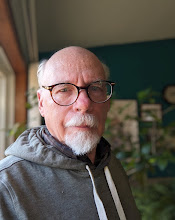Here is the second installment of my review/thoughts on Anthony Powell's A Dance to the Music of Time, which I am treating as a novel in 12 parts rather than a 12 novel series. I am going to be a bit briefer in these reviews, saving most of my more general thoughts to when I'm finished reading them, wherever that turns out to be.
My reviewer criteria. I like light, entertaining novels. I like smaller scale stories rather than epics. I like character focused novels featuring pleasant characters, with a minimum number of unpleasant ones. I greatly value clever and witty writing. I like first person, or close third person narratives. I dislike a lot of "head jumping" between POVs and flashbacks. I want a story, not a puzzle. While I am not opposed to violence, I dislike gore for the sake of gore. I find long and elaborate fight, action, and battle sequences tedious. Plot holes and things that happen for the convenience of the author annoy me. And I fear I'm a born critic in that I don't mind pointing out what I don't like in a story. However, I lay no claim to be the final arbitrator of style and taste, you need to decide for yourself what you like or dislike in a book.
Your opinions are always welcome. Comment below.
A Dance to the Music of Time: Summer by Anthony Powell
At Lady Molly's (1957)
Casanova's Chinese Restaurant (1960)
The Kindly Ones (1962)
These novels can be described as a series of encounters described in great detail with established and new characters over the course of decades. If you are interested in who these characters are based on, there is a web site here that lists them along with photos from real life and the TV series, I believe. The website is also a resource for all things A Dance to the Music of Time and Powell.
At the start of At Lady Molly's Jenkins is working writing scenarios for the film studio. Starting in 1927 a certain number of films, initially 7.5% raised to 20% in 1935, that were shown in Britain had to be made in Britain or its Empire. They usually where the second film on the program, and many of them were made quickly and cheaply just to fulfill the requirement. In any event, a friend from the studio takes Jenkin to Lady Molly's house where people seemingly gather every night to socialize. Here he meets several new or previously minor characters, as well as one or two of the usual suspects. From this first gathering flows several more extended encounters with various people connected one way or another with that night.
His affair with the married woman is over at the start of this installment, and by the end of it, he has encountered the woman who I believe is related to Molly that he is going to marry - knowing so at first sight. She is one of the youngest of a large family which he knows at least some of the members. There is a tangle of inter-family relationships throughout this series, a tangle that I can't hope to untangle, and don't bother trying. As I said in the previous post, I just go with the flow.
With Casanova's Chinese Restaurant, we start with a rather confusing back track in time in order to introduce some new characters; a composer, Moreland, and his musical friends before taking up the story some time after At Lady Molly's. Jenkins is now married and his wife is recovering from a miscarriage. Once again the story consists of several gettogethers this time with his musical friends, a party or two, and an introduction to his various eccentric in-laws. We're now in the late 1930's with the civil war in Spain going on. Every once in a while one of his old schoolmates shows up, including Wnderpool, usually rather disastrously. As it has become the pattern with these stories, much of the action is describing various gatherings, large and small in exhaustive detail, with much musing on the characters, old and new that he meets at these gatherings.
We take another trip back in time at the start of The Kindly Ones, this time back to his childhood in 1914. His father is an army officer and they are living in a "haunted" rented bungalow near Aldershot where is his father is stationed. We are introduced to the various servants and their various idiocentric behaviors, This chapter comes to a head when, while entertaining the Cello playing General Conyers and his wife, who we've meet previously, and waiting for the unwelcomed arrival of Uncle Giles, one of the servants, who having seen a ghost that night, has a nervous breakdown. Uncle Giles brings the news of the assassination of the Archduke Ferdinand sparking the first world war.
We then skip ahead twenty five years to the waning days of peace before the start of World War ll, and a gathering once more featuring the composer Moreland who he backtracked to introduce in Casanova's Chinese Restaurant. And once again we have a series of meetings of various sorts with old and a few new characters, with the story ending at the beginning of World War ll and Jenkins, the narrator looking to get into the army.
I realize that I am being rather uninformative in these reviews, in part because of the nature of these stories; not much happens beyond the house parties Jenkins, our narrator, attends, plus a whole lot of reflection on the lives of the people he meets at these affairs. The fact that Jenkins says next to nothing about his life, I think detracts from these stories, since all you are left with this rotating cast of characters, never on screen for all that long at any one time.
More next week.




No comments:
Post a Comment